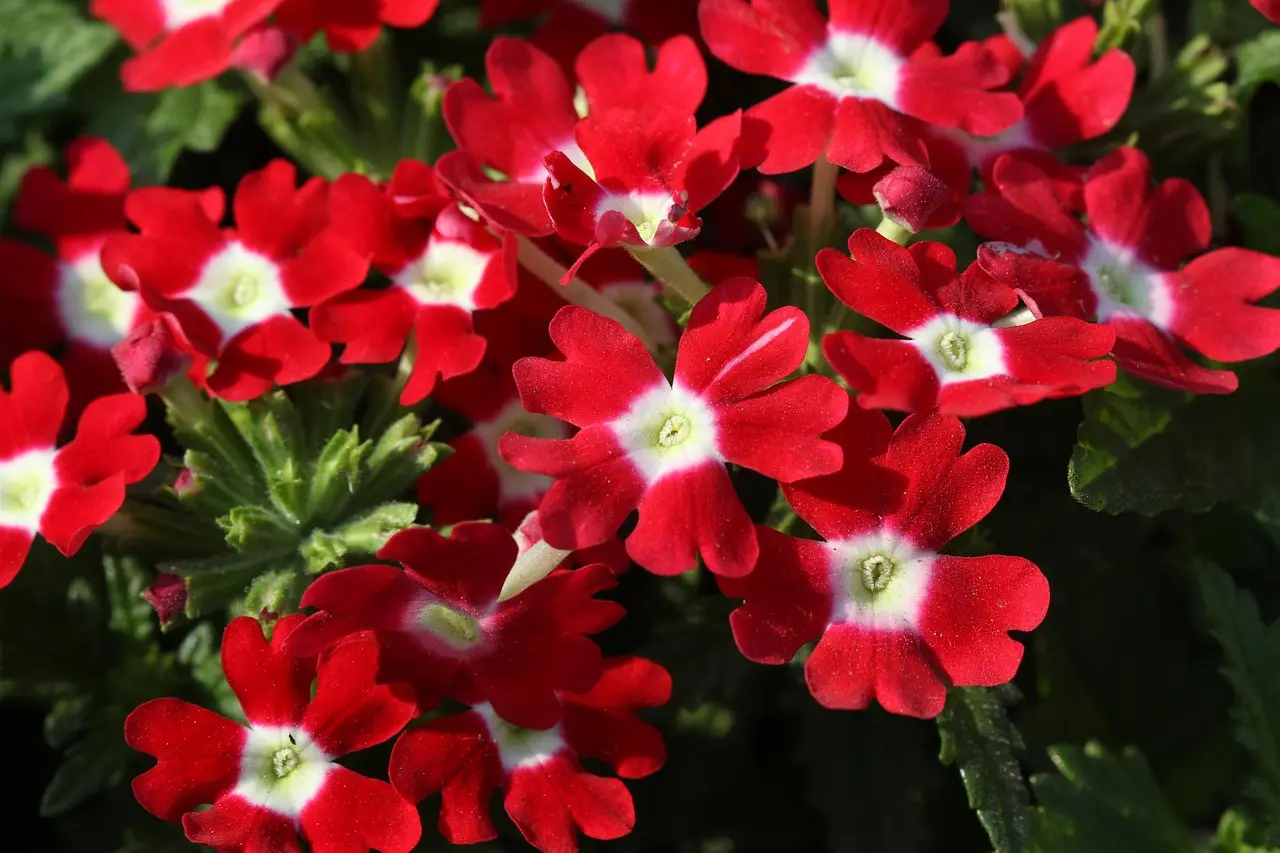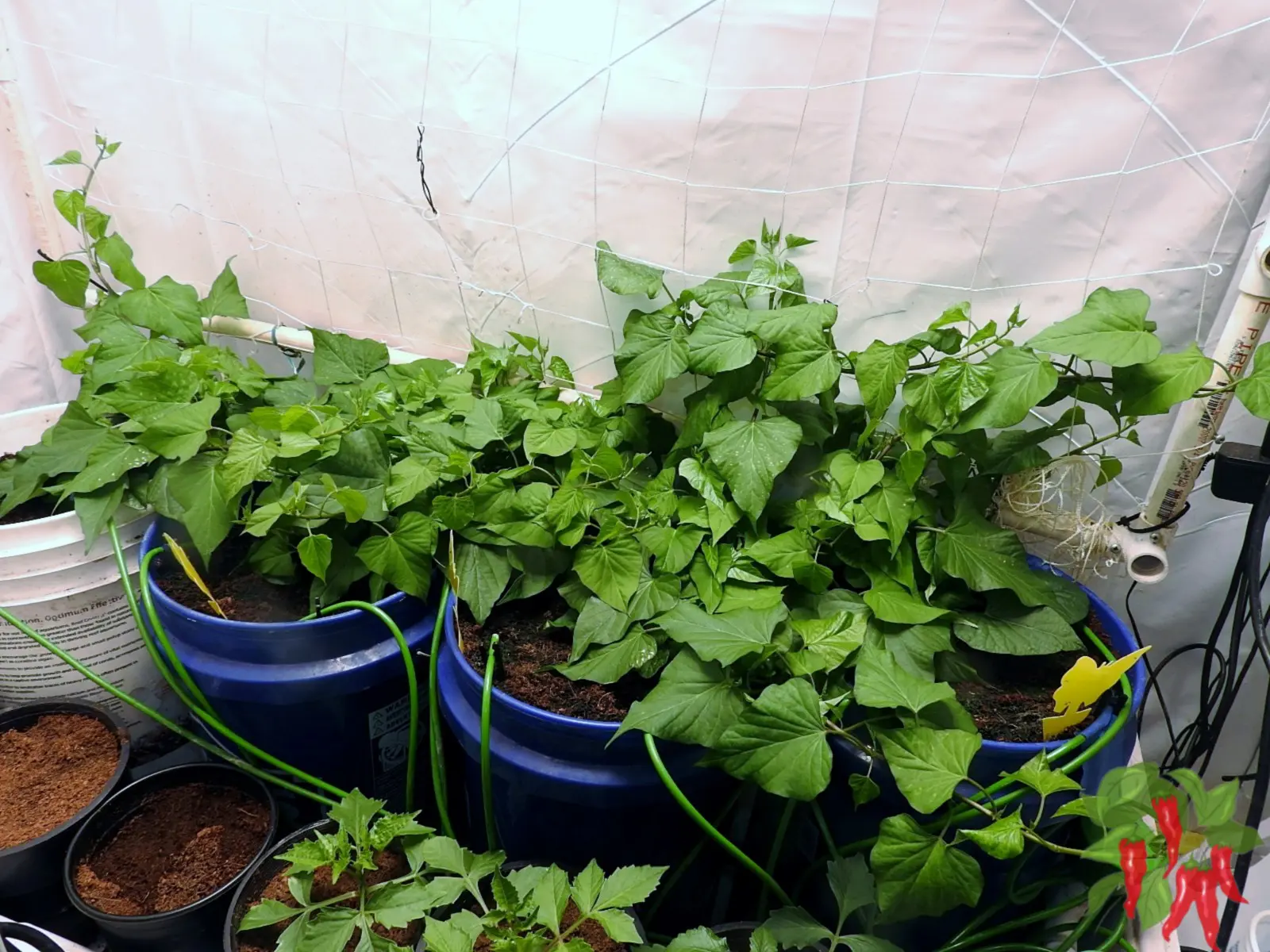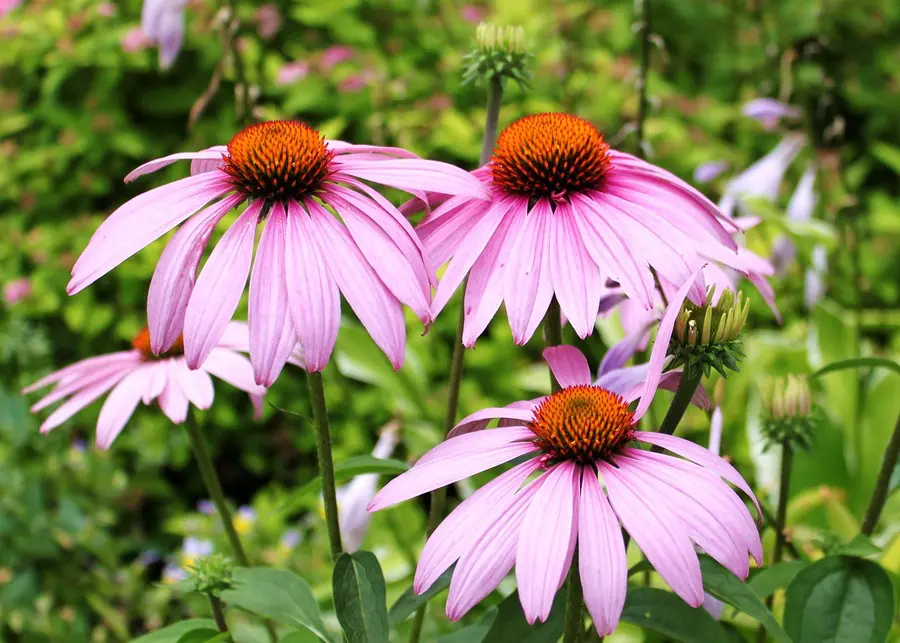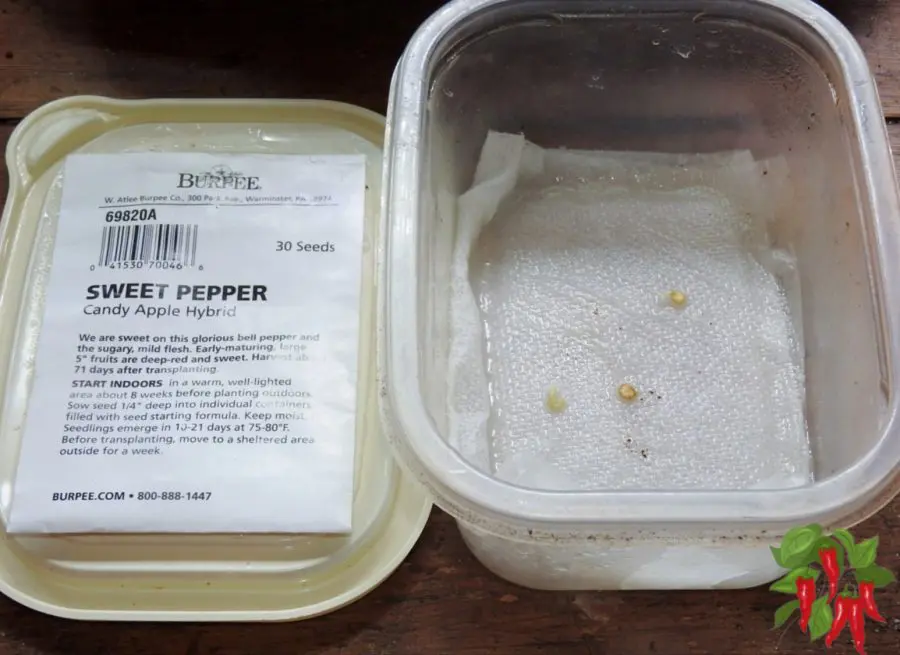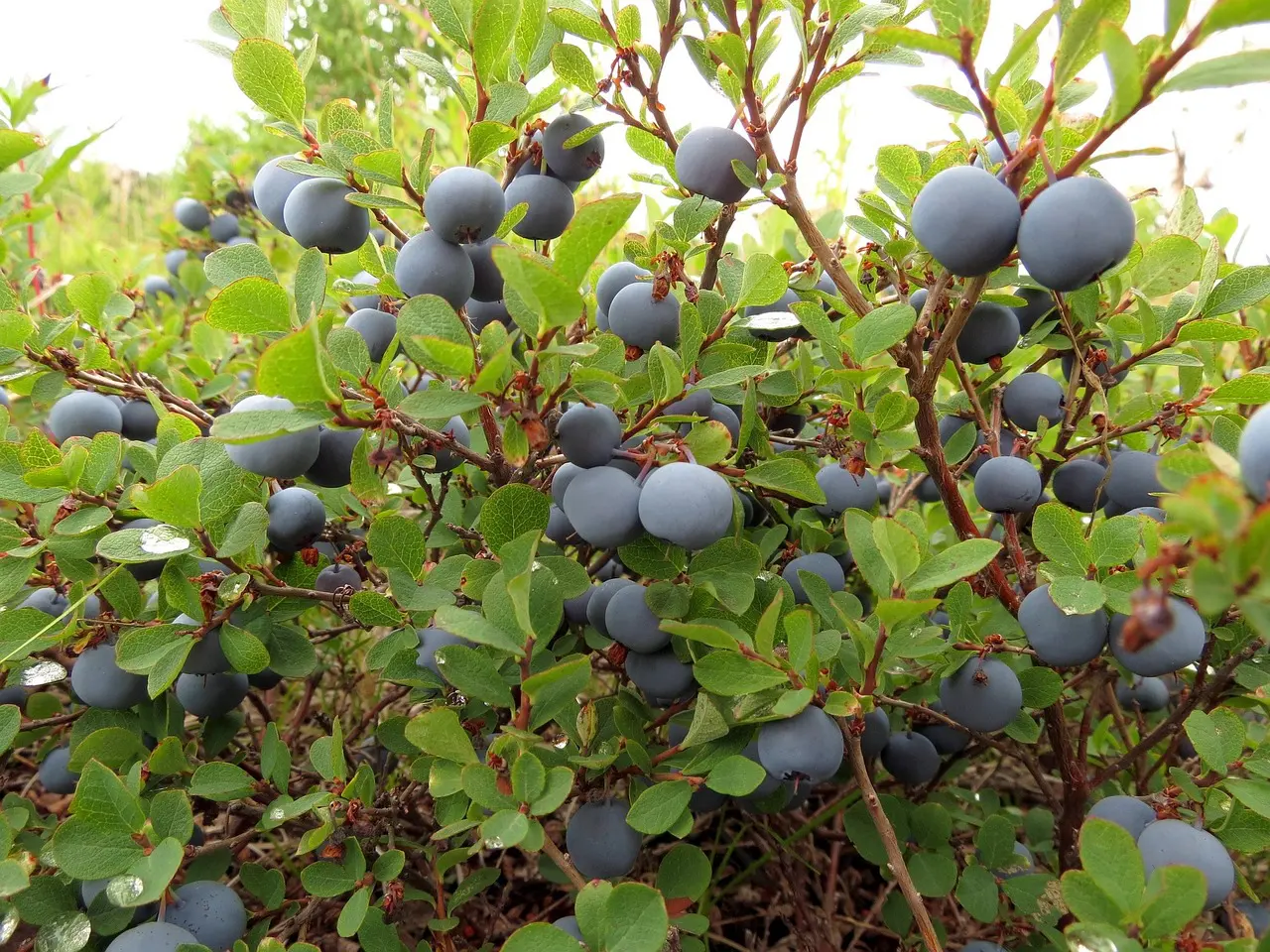This post contains affiliate links. If you buy something from one of our links we may earn a commission. Thanks
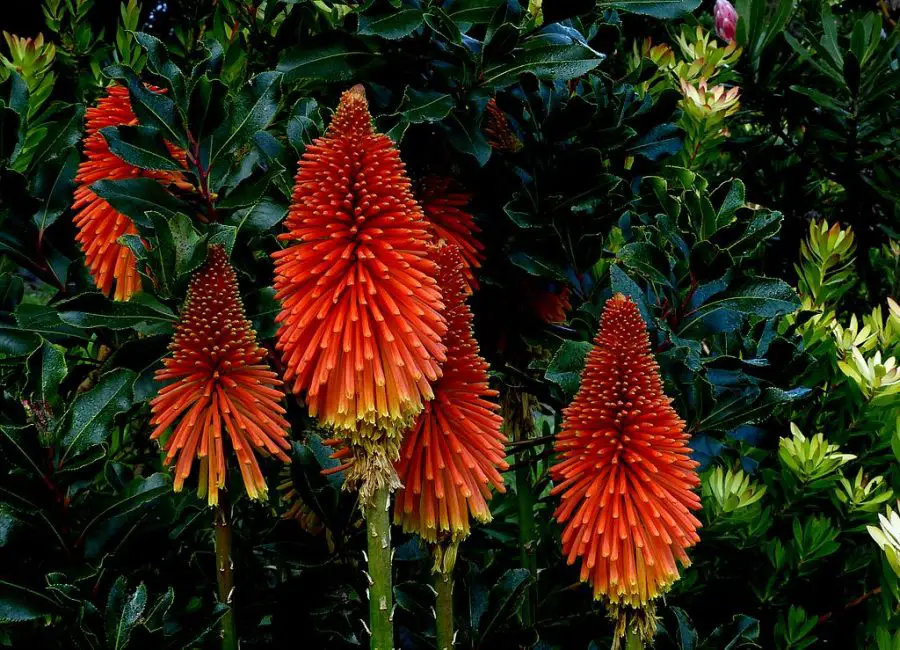
Learn how to grow and care for your Red Hot Poker Plant in Pots with this easy guide.
To grow the Red Hot Poker Plant or Kniphofia in pots, choose a large container with drainage holes. Fill it with well-draining soil mixed with compost. Plant the rhizomes 3-5 inches deep, and water thoroughly. Place the pot in a sunny location. Keep the soil moist but not waterlogged, and feed with a balanced fertilizer during the growing season.
Master watering, sunlight, and seasonal tips for a vibrant garden.
Have you ever marveled at the fiery hues of a Red Hot Poker plant and thought about bringing that vibrant spectacle into your home?
Well, growing a Red Hot Poker Plant in pots is a brilliant way to add a burst of color and an exotic touch to your indoor or outdoor space.
This guide will walk you through all the know-how you need to turn those fiery aspirations into a blooming reality!
Introduction- Red Hot Poker Plant in Pots
Welcome to our comprehensive guide on nurturing a Red Hot Poker Plant in pots.
We understand that the idea of caring for this exotic beauty might seem a little daunting at first, but trust us, it’s not as hard as it might appear.
In this guide, we will delve into everything you need to know: from understanding the plant’s size and light requirements to watering, fertilizing, and the ideal soil composition.
We’ll also share some tips on maintenance and propagation, and tackle common problems and pests.
By the end, you’ll be well-equipped with the knowledge you need to keep your Red Hot Poker vibrant and healthy.
Let’s embark on this exciting journey together!
Getting to Know the Red Hot Poker (Kniphofia)
Let’s begin our journey by getting to know our fiery friend a little better.
The Red Hot Poker, scientifically known by its botanical name as Kniphofia uvaria, is a perennial plant native to South Africa, cherished for its striking tubular flowers that resemble lit torches.
And so red-hot pokers are often called a torch lily. Its vibrant color palette, ranging from red and orange to yellow, pink, or cream, can effortlessly steal the show in any garden.
With over 70 species in this genus, there’s a Red Hot Poker for everyone!
Its blue-green foliage stands tall and proud, making it a spectacular choice as a specimen plant, for edging, or even in a rock garden.
Why Understanding Care for Red Hot Poker in Pots is Essential
Now, you might wonder why we’re putting special emphasis on understanding how to care for the Red Hot Poker in pots.
Well, while this captivating plant can be a joy to behold, it also requires a specific set of conditions to flourish.
When cultivated in a pot, we’re responsible for replicating its natural environment, from the correct lighting to the ideal well-draining soil mixture and appropriate watering schedule.
Our aim here is to arm you with the knowledge you need to keep your Red Hot Poker happy and healthy, ensuring its fiery blooms continue to light up your space year after year.
So, buckle up, and let’s dig deeper into this exciting adventure!
Understanding Red Hot Poker
So, now that we’ve laid the groundwork, let’s move on to the heart of the matter—understanding Red Hot Poker.
We’ll be focusing on its distinctive characteristics like its size and light preferences, optimal watering routines, suitable soil conditions, and the best pot size to accommodate its growth.
With a bit of patience and attentiveness, you’ll soon have a striking Red Hot Poker flourishing in its pot, all set to be the star attraction of your home or garden.
Ready to delve into the wonderful world of Red Hot Poker care? Let’s get started!
Getting Familiar with the Red Hot Poker Plant Size
The first thing you need to know about the Red Hot Poker is that it’s an upright plant that loves to stretch its legs!
Depending on the variety, it can grow anywhere between 2-5 feet tall. But don’t let its height intimidate you.
Despite its lofty stature, it’s remarkably manageable and will comfortably fit into your garden or indoor space, given the right pot.
Illuminating the Light Requirements
Just like its fiery common name, the Red Hot Poker craves sunlight.
To see it truly flourish, make sure you place it in a spot that gets plenty of bright, direct sunlight.
Ideally, it should soak up at least six hours of sunlight each day. If you’re growing it indoors, a sunny window is the perfect location.
The Right Approach to Watering Red Hot Poker
Hydration is crucial for the Red Hot Poker, but overdoing it can do more harm than good.
This plant enjoys a good soak, but it’s also quite drought resistant and doesn’t like sitting in soggy wet soil.
So, give it a thorough watering, making sure you saturate the soil about 5-6 inches deep, and then allow the plant to dry out completely before the next watering.
In hot summers, a weekly watering schedule usually does the trick.
Perfect Soil Mixture: Coco Coir and Perlite
When it comes to the perfect soil for your Red Hot Poker, a mix of coco coir and perlite works wonders.
This combination provides an excellent balance of water retention and drainage, replicating the well-drained conditions and organic matter the plant enjoys in its natural habitat.
The coco coir retains moisture and nutrients for the plant to use, while the perlite ensures excess water drains away, preventing the roots from becoming waterlogged and preventing root rot.
Choosing the Right Red Hot Poker Pot Size
Choosing the right pot size for your Red-Hot Poker plants is crucial.
It should be large enough to accommodate the plant’s mature size and provide space for the roots to spread out for the best results.
For a standard Red Hot Poker, a pot that’s at least 18-24 inches in diameter is a good starting point.
If you’re dealing with a larger variety, you might need a slightly bigger pot.
Always make sure the pot has good drainage to prevent waterlogging.
Remember, it’s all about providing a comfortable home for your fiery friend to grow and bloom!
Providing Adequate Nutrition
Let’s now delve into one of the key aspects of caring for your Red Hot Poker plant, nutrition.
Just like us, plants need a balanced diet to grow and bloom at their best.
The right nutrients will ensure your Red Hot Poker thrives and produces those dazzling blooms we all adore.
In this section, we’re going to focus on the ideal fertilizer for your plant and discuss how temperature and humidity play crucial roles in its well-being.
So, are you ready to learn about nourishing your Red Hot Poker to health and happiness? Let’s jump right in!
Feeding with the Right Red Hot Poker Fertilizer
Feeding your Red Hot Poker plant isn’t as complicated as you might think.
This hardy plant isn’t too demanding when it comes to nutrition.
In fact, it often thrives without any additional fertilizer, drawing enough nutrients from poor soil.
However, if you want to give it a little boost, especially during the growing season, it’ll appreciate a light application of a balanced, slow-release fertilizer in the spring.
When you fertilize, avoid getting it on the plant’s foliage or crown to prevent burn injuries, and always water well afterward.
Remember, moderation is key here.
Over-fertilizing can cause more harm than good, potentially damaging the plant’s roots and inhibiting its growth.
If you stick to this guidance, your Red Hot Poker will have the nourishment it needs to keep those vibrant flowers coming.
Climate Considerations
Now that we’ve got a handle on nutrition, let’s switch gears and discuss the environmental factors that can influence your Red Hot Poker’s health.
Climate plays a huge role in plant care, and understanding the optimal conditions for your Red Hot Poker can mean the difference between a flourishing plant and one that’s struggling.
In this section, we’ll discuss how temperature and humidity affect your Red Hot Poker, and how you can create an environment that feels just like its natural South African home.
So, without further ado, let’s talk about climate considerations for your fiery friend!
Balancing Temperature and Humidity for Red Hot Poker
Originating from South Africa, the Red Hot Poker is used to warm temperatures and doesn’t do well in frost.
It prefers daytime temperatures between 60°F and 75°F but can tolerate a bit more heat.
At night, a range between 50°F and 60°F is suitable. If you’re growing it indoors, keep it away from drafty windows or doors during the winter to protect it from the cold.
As for humidity, this plant isn’t too fussy. It can handle a range of humidity levels, but it does best in moderate conditions.
If you’re growing your Red Hot Poker indoors and the air is particularly dry, you might consider using a humidifier, using a pebble tray, or grouping it with other plants to increase humidity levels.
Understanding USDA Zones and Cold Hardiness
The Red Hot Poker is a versatile plant and can grow in USDA zones 5-9.
This means it can handle a range of climates, from fairly cold to quite hot.
However, if you live in a region where temperatures drop below freezing, it’s important to take steps to protect your Red Hot Poker during the winter.
More on that in the next point!
Winterizing Your Red Hot Poker Plant
While your Red Hot Poker is a hardy fellow, it appreciates a little extra care during the harsh winter months. Here’s how you can winterize it:
As the cold weather approaches in late autumn, avoid cutting back the plant’s foliage and flower stalks. These will continue to feed the plant over winter.
If you live in a growing zone where the plant is sensitive to cold temperatures, gather the leaves and tie them to the crown of the plant.
This protects the main crown from getting too wet and too frozen in cold climates.
When early spring arrives and the threat of frost is over, you can remove the tie and trim back the plants to prepare for new growth.
Following these steps will ensure your Red Hot Poker survives the winter and is ready to dazzle you with its fiery blooms when the warm weather returns.
Regular Maintenance of Red Hot Poker
Stepping into our next section, we’ll dive into the day-to-day care that keeps your Red Hot Poker plant in top-notch condition.
Regular maintenance isn’t just about keeping the plant looking good; it’s about ensuring it’s healthy and primed to produce those signature stunning flowers.
From pruning to repotting and propagation, each task is a step towards a more vibrant and flourishing Red Hot Poker.
Ready to roll up your sleeves and become a Red Hot Poker pro? Let’s get started with regular maintenance!
Staying on Top with Red Hot Poker Maintenance
Maintenance for Red Hot Poker plants is pretty straightforward.
Since it’s a hardy and low-maintenance plant, you won’t need to babysit it constantly.
However, there are a few key practices that can keep it looking its best and producing those vibrant blooms year after year.
If planted in early spring you can expect flowers the first year.
1. Pruning
Let’s start with pruning. The great thing about Red Hot Poker plants is that they don’t require heavy pruning.
After blooming, resist the temptation to cut back the tall stalks. Allowing the foliage to remain through the season helps the plant store food for winter.
But you can definitely remove the spent blooms once they fade. This is known as deadheading and encourages continuous blooming.
2. Cleaning Up
In early spring, it’s time for a little cleanup.
The old foliage can be cut back to about 3 inches to tidy up the plant and prepare it for new growth.
3. Observing
Finally, regular maintenance involves keeping an eye on your plant. Watch out for signs of pests, disease, or other problems.
A keen eye will catch any issues early, giving you a chance to take action before they become serious.
Stick to these maintenance practices, and your Red Hot Poker will reward you with a long, vigorous, and colorful life!
Repotting Your Red Hot Poker: A New Home for a Growing Friend
Repotting a Red Hot Poker plant might seem like a daunting task, but with a little guidance, you’ll find it’s a simple process.
More than just a routine chore, think of it as helping your plant upgrade to a more spacious home where it can continue to grow and flourish.
Ready to roll up your sleeves and get started? Let’s dive in!
Step-by-Step Guide to Repotting Red Hot Poker
Step 1: Choose the Right Time
The best time to repot your Red Hot Poker is in early spring, just as new growth starts.
This way, the plant has a whole growing season to establish itself in its new pot.
Step 2: Prepare the New Pot
Select a pot that is one size larger than the current pot. Make sure it has good drainage holes to prevent waterlogging.
Fill the pot with a mixture of coco coir and perlite, which provides excellent aeration and water retention for your plant’s roots.
Step 3: Remove the Plant
Water the plant well a few hours before repotting to help ease the roots out of the old pot.
Then, gently remove the plant, taking care not to damage the root ball.
Step 4: Plant in the New Pot
Place the plant in the new pot, ensuring the top of the root ball is level with the rim of the pot.
Fill in around the roots with more of your soil mix, pressing down lightly to remove any air pockets.
Step 5: Water Well
Once you’ve repotted your Red Hot Poker, give it a good watering. This helps the soil settle around the roots and removes any remaining air pockets.
And there you have it! With these easy steps, your Red Hot Poker plant will settle into its new home in no time.
Remember, repotting is an important part of plant care that helps ensure your Red Hot Poker has enough space to grow and flourish. Happy gardening!
Propagating Red Hot Poker
Ah, propagation! There’s something magical about taking a piece of a plant you love and nurturing it into a new, independent life.
In this section, we’re going to talk about how you can propagate your Red Hot Poker plant.
If you’ve been thinking about multiplying the fiery beauty in your garden or gifting a piece of your prized plant to a friend, this is where you’ll learn how.
So, let’s embark on this exciting journey and learn the steps to successfully propagate your Red Hot Poker plant!
Propagating your Red Hot Poker plant can be an exciting gardening project, and it’s also a fantastic way to multiply the plant’s fiery beauty in your garden.
Here are a couple of methods you can use:
1. Division:
Division is the most common and easiest method to propagate Red Hot Poker plants. Here’s how you can do it:
Wait for early spring or late fall, when the plant is not actively growing.
Carefully dig around the base of the plant to unearth the root ball.
Using a sharp, clean tool, divide the root ball into sections, ensuring each piece has at least one growing point or eye.
Plant these sections in appropriate potting mix in individual pots, or in a new location in your garden.
Make sure to water them well and place them in a location similar to their parent plant’s conditions.
2. Seeds:
Growing Red Hot Poker from seeds is also possible, though it may require more time and patience:
Start by collecting seeds from a mature Red Hot Poker plant. These can usually be found in the spent flower heads.
In early spring, plant the seeds in a seed-starting mix. Keep the soil moist but not waterlogged.
Place the seeds in a warm, sunny spot, or use a heat mat to maintain an ideal temperature of around 70°F.
Once the seedlings are big enough to handle, you can transplant them into individual pots or into the garden.
Remember, propagation isn’t an exact science and it may take a few tries to get it right.
But with patience and care, you’ll soon have new Red Hot Poker plants to enjoy or share with others!
Common Red Hot Poker Problems
Now, while we all wish it were smooth sailing, sometimes our gardening adventures can have a few hiccups.
In this section, we’ll be talking about some common issues that might arise while growing a Red Hot Poker plant in pots.
While these problems might seem daunting, don’t fret! With a bit of knowledge, many of these can be easily resolved or even prevented.
So, let’s buckle up and prepare ourselves to tackle any obstacle that comes between us and our vibrant, fiery Red Hot Poker
Solving Red Hot Poker Problems
Growing Red Hot Poker plants can be a joy, but like all plants, they can occasionally have problems. Here are some common issues and how you can address them:
1. Poor Flowering
If your Red Hot Poker isn’t producing those stunning fiery blooms, it could be due to insufficient light, incorrect watering, or a lack of nutrients.
Make sure the plant is receiving full sun, and check your watering and fertilizing routines to ensure the plant is getting what it needs to flower.
2. Yellowing Leaves
If the leaves of your Red Hot Poker are turning yellow, overwatering could be the culprit.
Red Hot Poker prefers to dry out between waterings, so ensure your watering routine allows for this.
If the problem persists, check the drainage of the pot to ensure it’s not causing water to sit at the roots.
Recognizing and Treating Red Hot Poker Pests and Diseases
Even though Red Hot Poker is a relatively low-maintenance plant, it can still be attacked by pests and diseases.
Here’s what to look out for and how to respond:
1. Pests
Common pests for Red Hot Poker include aphids and spider mites.
These small creatures can suck the sap from the plant, causing wilting or discolored leaves.
If you spot them, you can often control these pests with a strong blast of water or by introducing beneficial insects, like ladybugs, into your garden.
For more stubborn infestations, a safe insecticidal soap or neem oil can be used.
2. Diseases
Red Hot Poker plants can also be susceptible to fungal diseases, especially if they are overwatered or if their foliage is frequently wet.
Signs of fungal disease can include spots on leaves or a powdery white substance.
If you notice these symptoms, try reducing watering and keeping the foliage dry. In severe cases, a fungicide can be used.
By keeping a watchful eye on your Red Hot Poker and acting swiftly if problems arise, you can ensure your plant stays healthy and continues to produce its spectacular, fiery blooms!
Baking soda for PM
Baking soda, scientifically known as sodium bicarbonate, can be a handy ally in your fight against powdery mildew (PM), a common fungal disease that affects a wide range of plants, including Red Hot Poker.
Powdery mildew appears as a white or gray powdery film on the leaves and stems of plants. It can affect the overall health of your plant, stunting its growth and reducing flowering.
A baking soda solution can create a pH that’s unsuitable for the fungus that causes powdery mildew. Here’s a simple recipe for a baking soda fungicide spray:
Ingredients: Combine 1 tablespoon of baking soda, 1/2 teaspoon of liquid soap, and 1 gallon of water. The soap helps the mixture stick to the leaves and stems.
Application: Spray this solution on the affected parts of your Red Hot Poker plant. Make sure to cover the undersides of the leaves, where powdery mildew often starts.
Frequency: Apply the spray once a week and after rainfall. If your plant is heavily affected, you can increase the frequency to twice a week.
Remember, prevention is always the best method of controlling powdery mildew.
Good air circulation, proper spacing, and watering your plants at the base (to avoid wetting the leaves) can all help prevent this fungal disease.
However, if you notice the signs of powdery mildew on your Red Hot Poker plant, don’t hesitate to whip up this simple baking soda solution to help get the problem under control. Happy gardening!
Additional Information from Google Suggests
Well, we’ve covered a lot, haven’t we? But we’re not done yet! In this section, we’re diving into some fascinating tidbits and commonly asked questions suggested by Google.
These nuggets of information will fill in any blanks and round out your knowledge of nurturing Red Hot Poker plants in pots.
So, get ready to become a veritable Red Hot Poker guru.
There’s always something new and intriguing to learn in the world of gardening!
Is the Red Hot Poker Plant Poisonous?
While the Red Hot Poker plant is a showstopper in the garden, it’s worth noting that it’s not harmful if touched or consumed.
However, as with all plants, individual reactions may vary, and it’s always a good idea to discourage pets and children from eating non-food plants.
Do Red Hot Pokers Come Back Every Year?
Yes, indeed! Red Hot Pokers are perennials, which means they’ll delight you with their fiery blooms year after year.
They generally start blooming in late spring and continue throughout the summer.
Are Red Hot Poker Plants Invasive?
Red Hot Poker plants can spread in suitable conditions and might become problematic in some regions.
It’s a good idea to check with your local extension service to see if it’s considered invasive in your area.
How to Deadhead Red Hot Poker Plants
Deadheading, or removing spent flowers, can encourage Red Hot Pokers to produce more blooms.
Simply cut the flower stem back to the base once the blooms have faded.
Red Hot Poker Not Flowering
If your Red Hot Poker isn’t blooming, it might be due to insufficient sunlight or nutrients, or incorrect watering.
These plants love full sun, and while they can tolerate some drought, they do best with regular watering and a balanced fertilizer.
About Red Hot Poker Bulbs
Red Hot Poker plants aren’t grown from bulbs, but from fleshy tuberous roots called rhizomes.
Planting these rhizomes in the right conditions can yield a striking display of torch-like blooms.
Dwarf Red Hot Poker Plant
For smaller gardens or pots, Dwarf Red Hot Poker is an excellent choice.
These varieties offer the same stunning flowers as their taller cousins but in a more compact form.
Dividing Red Hot Poker Plants
Red Hot Poker plants can be divided to propagate them. This process involves splitting the plant’s rhizomes in late winter or early spring, ensuring each division has at least one eye or growth point.
What is a Red Hot Poker Plant?
The Red Hot Poker is a striking perennial plant known for its tall, torch-like flowers. Native to South Africa, this plant brings a unique, fiery flare to any garden.
Do You Cut Back Red Hot Poker Plants?
While not necessary, you can cut back Red Hot Poker plants in late fall or early winter for tidiness.
However, many gardeners prefer to leave the foliage in place to protect the crown of the plant during the winter.
Frequently Asked Questions (FAQ)
Alright, let’s get down to the nitty-gritty! In this section, we’ll tackle some of the most frequently asked questions about Red Hot Poker plants in pots.
Chances are, some of these questions have crossed your mind, too.
So, whether you’re a first-timer or a seasoned green thumb, this FAQ is the perfect place to clear up any lingering queries about these fiery beauties.
Let’s dive in, shall we?
Q. Do red hot pokers need to be cut back?
A. While it’s not a strict requirement, cutting back Red Hot Poker plants in late fall or early winter can tidy up your garden.
However, many gardeners prefer to leave the foliage in place to protect the plant’s crown during the winter.
Q. Where is the best place to plant red hot pokers?
A. Red Hot Pokers thrive in full sun and well-drained soil. They’re great as the centerpiece of a sunny flower bed or nestled among other perennials where they can provide a splash of color.
Q. Do Red Hot Poker plants come back every year?
A. Yes, they do! Red Hot Pokers are perennial plants, meaning they’ll return each year to display their brilliant blooms.
They generally start to flower in late spring and can continue throughout the late summer.
Q. Do red hot pokers multiply?
A. Absolutely. Red Hot Poker plants spread through their rhizomes (underground stems).
You can divide these rhizomes to propagate new plants, but be careful – in some areas, they may spread more than you’d like!
Q. Do red hot pokers do well in pots?
A. Red Hot Poker plants can indeed be grown in pots, although they’ll have less room to spread than they would in the ground.
If you choose this route, opt for a larger pot and be sure it has good drainage.
Q. How do you take care of red hot pokers in the winter?
A. Red Hot Poker plants are quite hardy, but in colder regions, it’s a good idea to provide some extra winter protection.
One approach is to tie up the leaves over the crown of the plant to protect it from severe cold winters and wet weather. Remember to remove this in spring to allow new growth.
Red Hot Poker Plant in Pots Final Thoughts
And there you have it, everything you need to know about caring for Red Hot Poker plants in pots!
Isn’t it exciting to have such an intriguing plant in your garden or home?
With their bold colors and unique structure, they’re sure to be a standout.
Remember, every plant journey is a learning process, so don’t worry if you make a few mistakes along the way.
The important thing is to enjoy the experience and watch your fiery friends thrive.
Let’s bring a dash of vibrancy into our lives with these fiery torch lilies, shall we?
Recap of Red Hot Poker Plant in Pots
We’ve covered quite a bit of ground in this comprehensive guide about Red Hot Poker plants in pots, haven’t we?
We began by understanding the beautiful Kniphofia genus, followed by the perfect environment and essential care details to keep these beauties happy and healthy.
We then discussed various considerations including nutrition, climate, regular maintenance, propagation methods, and common problems.
Not forgetting the additional insights from Google suggests and the frequently asked questions we answered!
It’s all about giving you a holistic understanding of these fiery, attention-grabbing plants.
Your Red Hot Poker Plant Adventure Awaits
And now, my fellow gardening enthusiast, it’s your turn to put all this knowledge into action.
Don’t just read about it, experience it! Start your own adventure with a Red Hot Poker plant.
Remember, gardening is a personal journey filled with growth, learning, and a lot of dirt under your fingernails!
Whether you’re a seasoned gardener looking for a new challenge or a newbie eager to dive into the world of container gardening, Red Hot Poker plants offer a rewarding experience.
So, grab that pot, prepare the soil, and let’s add a dash of fiery red and vivid orange to your garden with a Red Hot Poker plant. Happy planting!
Read more: Backyard Gardening Ideas














